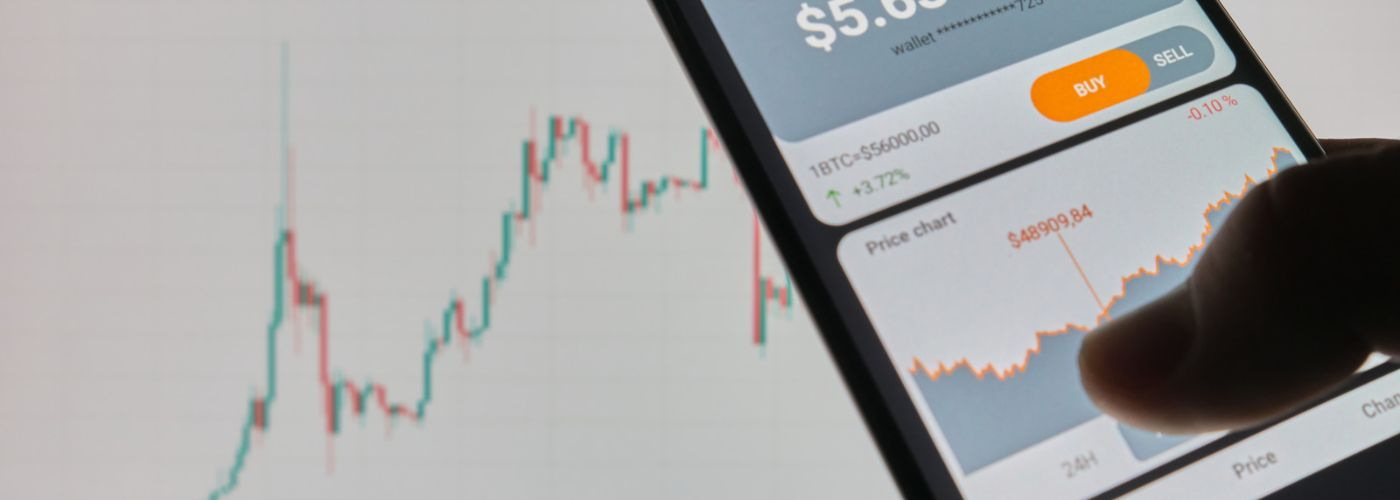What is Polkadot (DOT)?

Description
The diversity of blockchains and cryptocurrencies has created the need for a bridge for all market participants. Polkadot multichain and its own cryptocurrency DOT became this link.
Polkadot is a multichain network that connects blockchains and allows them to exchange information among themselves. Polkadot (DOT) is the cryptocurrency of Polkadot.
History of the creation of Polkadot
The idea for the project originated in 2016, when Ethereum co-founder, technical director, and part-time chief developer Gavin Wood left the project, stating that Ether had not lived up to his expectations.
Wood worked with well-known developer Marek Kotewicz to implement the new project to improve and simplify Ethereum's algorithms. In the same year, 2016, they presented to the crypto community a draft version of the Polkadot White Paper (the main document of the project). Thus, the one who stood at the origins of Ether modernized its functionality and brought out a completely new and unique product.
In 2017, developer Peter Czaban joined the team. Robert Habermeier, a researcher and developer of blockchain technology recruited by Wood, also contributed heavily to the creation and debugging of Polkadot.
Together with Czaban, Wood founded the Web3 Foundation in 2017, with the main mission of promoting the development of protocols, applications, and other software for the decentralized internet (Web3 proper). Web3 Foundation, for its part, is controlled by Parity Technologies, a blockchain technology company that Wood and his colleagues also founded while working on Ethereum. The former Ether director deserves praise not only for his genius in development but also for his foresight and top-level management decisions.

Polkadot token (DOT) ICO
In the same momentous 17th year, the Web3 Foundation held the Polkadot token (DOT) ICO, an initial sale of DOT coins to investors. All the tokens and there were 5 million for sale (out of 10), were sold out in two days. The Web3 Foundation raised $145 million as a result of this sale – an impressive result by ICO standards. In 2019–2020, the Web3 Foundation sold another 500,000 DOTs and earned another $45 million in private token sales to raise funds to develop Polkadot technology. As a result of these activities, experts estimate that the capitalization of the project has risen to $1.2 billion.
In 2020, the first version of the Polkadot network was released using the genesis block relay chain (a kind of main network buffer that processes data from different blockchains).
New Polkadot platform upgrades
December 2021 also saw the launch of parachains – parallel blockchains running, so to speak, around the main genesis block. Notably, the final number of parachains (at this stage of the project) is limited and is up for auction by the creators of the Polkadot multichain. In this way, any blockchain can integrate into the Polkadot network and work cross-platform with other blockchains that have bought space in the network as a parachain.
Some updates and optimizations are planned for 2022 and beyond. So we are at the point where we can see first-hand the design, development, and emergence of a truly unique project to unify blockchain technology and form a new decentralized internet.
Interesting facts about Polkadot ecosystem projects
The creators of Polkadot reported that a total of 10 million DOT tokens were issued, of which half were left as part of the ICO. However, this information was later paradoxically replaced by a lack of information on any issuance limit. Some analysts point out that in such a situation, there is a risk of major token inflation if the company starts issuing large numbers of new tokens uncontrollably.
Nevertheless, Polkadot no longer issued new coins. It also carried out a coin denomination, breaking each coin issued into 100. Thus, 1 billion DOT tokens became available in the nature of crypto things. Neither holders, investors, nor traders lost a cent – because the face value of the new tokens became worth the same as 0.01 of the old tokens, which is essentially the same thing. With one difference – there are more tokens without compromising anyone. That's the thing about Gavin Wood, though.

The benefits of Polkadot
The Polkadot project is one of the most innovative in the blockchain industry in recent years. To form an opinion about its investment attractiveness, it will be enough to list some unique features and facts related to the development of the project:
- Polkadot is the first system to allow the building of independent blockchain networks (parachains) on its basis. Parachains can issue their own tokens and have functionality different from the Polkadot core. Parachains can also exchange information with each other, naturally, through the Polkadot core. To understand the fundamental logic of the project, it is worth comparing its development with the development of the internet in the late 20th century. In the past, computers around the world could not communicate with each other except by interconnecting in small local networks; in the 21st century, there is a similar situation with blockchain projects (take Bitcoin, Ethereum, Solana, Polygon, Decentraland, etc.) – they exist on their own and do not exchange data. Polkadot solves this problem!
- The platform really attracts investors like a magnet. For example, one can only take over a parachain (slot) on the network after winning an auction. Thus, the most technically advanced and confident blockchain projects are buying out their seats on Polkadot and joining the so-called 'internet of blockchains.
- The project is implemented in such a way that it has its own Kusama test network with similar functionality. Before introducing any changes and improvements to the main Polkadot network, they are all tested in Kusama. At the moment, the main difference with the test network is that parachain slots can be rented for 48 weeks. And on the main network, this period is 96 weeks.
- Financial analysts agree that the DOT Altcoin is expected to show significant growth over the second half of 2022, and in the next few years, the token is bound to renew its maximum, reaching and passing the $70 per DOT level, with a subsequent spurt over the $100 line.
- The DOT token is not only used as a means of payment or as an exchange asset but also grants its holders 3 superpowers: a) the ability to manage the project based on the volume of tokens held by the holders; b) the possibility of staking DOT cryptocurrency in online wallets – a kind of passive income, similar to a bank deposit, except that the interest in crypto is always higher; c) the ability to freeze an existing asset ('bonding' DOT) in exchange for any technical privileges, such as renting a parachain slot or connecting a bridge.
- 'Bridges' is also a company's proprietary development, enabling parachains to communicate with external blockchains outside the Polkadot network.
Polkadot (DOT) cryptocurrency
As mentioned earlier, the eponymous cryptocurrency of the Polkadot network appeared in 2017. The coin began trading in August 2020, when it reached a historic low of $2.69 per DOT. The Polkadot Altcoin, like many other coins, peaked in November 2021, reaching $55 per DOT.
Currently (January 2022), 1 DOT is valued at $27.67. The fall of the coin rate from the maximum values coincides with the general subsidence of the entire crypto market. The forecasted rate for mid-spring 2022 is $17–$19 per DOT. The wave nature of prices implies subsequent growth and reaching new horizons by the end of the year.
The DOT now ranks 10th among all cryptocurrencies in the world, and there are more than 10,000 of them, with a market capitalization of $27.3 billion.

Conclusion
Polkadot is a young project designed to solve many problems of scaling individual networks by combining third-party blockchains and allowing them to work with each other. The Polkadot empire under construction is led by Gavin Wood, the enterprising and brilliant blockchain developer who pioneered Ethereum and elevated it to an iconic blockchain. Many experts, including the creators of Polkadot, call their multichain 'the decentralized future of the internet.
The path from drafts on paper to a functioning Polkadot blockchain network took 4 years, launching fully in 2020. The Polkadot (DOT) Altcoin has been traded on exchanges for only a year and a half (since August 2020) and is already in the top 10 global cryptocurrencies.
By operating with such a small time frame to argue for the promise of multichain and its DOT token, EXEX presents its clients with the opportunity to trade this cryptocurrency in the best market conditions – large leverage and an automatic deposit protection system, as well as an intuitive platform interface.



